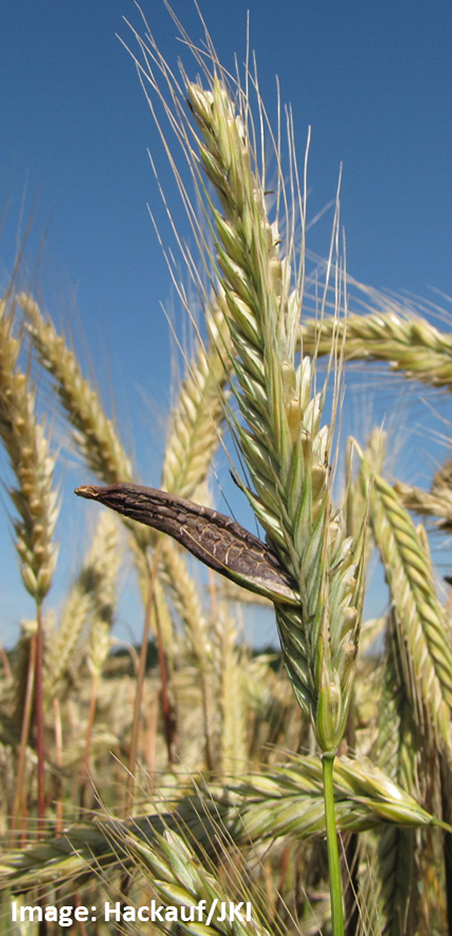ERGOT
 Importance
Importance
Ergot is a disease caused by the fungal pathogen Claviceps purpurea [Fr.] Tul., that infects the developing grains of cereals and grasses. Open-pollinating rye hybrids with an unsatisfactory restoration level and reduced pollen shedding are notably susceptible to ergot as the fungal spores have no competitors during the infection of the stigmatic tissue. The compliance of the thresholds for ergot contamination in the harvest is critical for a reliable marketing of rye. Thus, ergot infection counts among the economically most important diseases in rye and should be minimized in commercial production.
Main symptoms
Ergot symptoms become visible during kernel formation, when ergot bodies are established instead of grains. The ergot bodies, the so called sclerotia, are the over-wintering structures in the disease cycle.
Genetic Disease Prevention
Susceptibility to ergot upon artificial inoculation is a trait assessed for registered rye varieties since 2008 in the descriptive variety list of the Bundessortenamt, an independant German senior federal authority under the supervision of the Federal Ministry of Food and Agriculture, that is responsible for granting of Plant Breeders' Rights, the registration of varieties in the National List and for variety and seed affairs. The cultivation of varieties producing sufficient quantities of pollen maximize the ergot defense in the open-pollinating rye as most efficient means for a preventive consumer protection.
